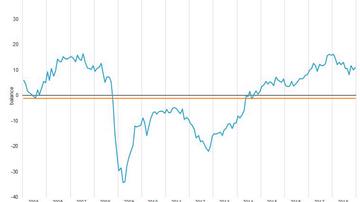Earth Day
Earth Day is an annual event celebrated on 22 April. On that day various events connected with environmental protection are held worldwide. The World Earth Day started to be celebrated in 1970. It is currently celebrated in 192 countries.
Environmental and climate literacy, which is the main topic of this year’s Earth Day, is not intended only for creating green voters and advancing environmental and climate laws and policies but also for accelerating green technologies and jobs.
More jobs in the green economy
Expressed in full-time equivalents (FTE), in 2014 25,428 persons (4.3% more than in 2013) were employed in the green economy in Slovenia, particularly in the environmental goods and services sector. An FTE is the number of hours worked by one employee on a full-time basis on the economic territory of the country. Most people were employed in 2014 in water supply, sewerage, waste management and remediation activities (9,346 FTE), followed by manufacturing (6,222 FTE) and agriculture, forestry and fishing (4,762 FTE).
The climate is changing
With rapid population growth and overuse of natural resources, particularly fossil fuels, we are witnessing dramatic climate changes. In the past 150 years the average air temperature increased by about 0.6 °C. Without lowering greenhouse gas emissions, in the next few decades the average global air temperature could increase by 1.5 °C to 4.5 °C.
According to the latest data provided by the Slovenian Environment Agency, greenhouse gas emissions in Slovenia amounted to 16,831 Gg of CO2 equivalent in 2015, which was 1.3% more than in 2014 (16,610 Gg of CO2 equivalent) and 8.2% less than in 2013 (18,341 Gg of CO2 equivalent).
Most of these emissions were energy-related, i.e. from the use of fuels in energy production, manufacturing, construction, transport and other sectors; in 2015, 13,395 Gg of CO2 equivalent or 79.6% of total greenhouse gas emissions. The rest was contributed by agriculture (1,744 Gg of CO2 equivalent or 10.4%), industry (1,172 Gg of CO2equivalent or 7.0%) and waste (521 Gg of CO2 equivalent or 3.1%).
The largest share of total greenhouse gas emissions comes from CO2, which is mostly generated by burning fossil fuels. CO2 emissions accounted for 80.8% of total greenhouse gas emissions in 2015, 1.9% less than in 2013. Methane (CH4) and nitrous oxide (N2O) are mostly generated in agriculture and on landfills; in 2015 they contributed 12.1% (CH4) and 4.9% (N2O), respectively. The share of F-gases is low (2.2%), but they are very extremely harmful due to a high greenhouse potential.
Metka Pograjc, Statistical Office of the Republic of Slovenia


































































